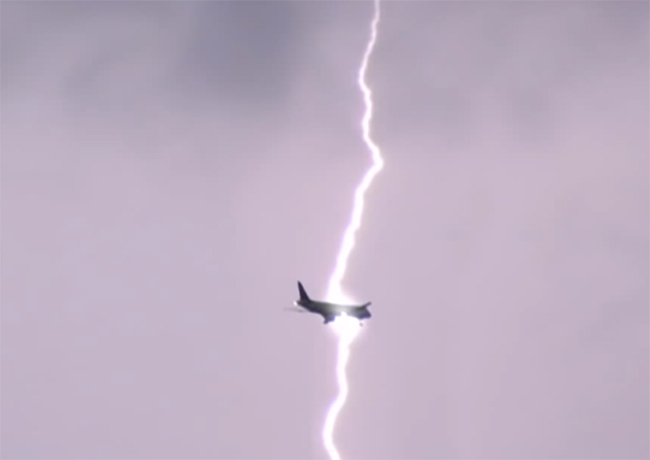Although a lightning strike can be terrifying to passengers, aircraft are designed to be able to withstand most strikes.
On average, every plane is hit once a year.
AirlineRatings has obtained this spectacular video (below) of an aircraft being struck by lightning in the US.
Most lightning strikes on aircraft occur below 4000m (12,000ft).
Only 10 per cent of strikes are a case of being in the wrong place at the wrong time — nine out of 10 are triggered by the aircraft itself as it flies through a heavily charged area of cloud.
While strikes are common, serious accidents are rare as the aircraft and its passengers are protected by the design of the aircraft which forces the lightning to redistribute itself on the outside skin.
In about a third of cases aircraft suffer minor damage such as burn marks, residual magnetism and arcing at hinges.
Strikes can, however, be more serious.
“Positive lightning” is 10 times more powerful than its negative counterpart and accounts for about 5 per cent of strikes.
Severe strikes by this powerful force can damage avionics and put the plane’s safety at risk.
In 1973, a Fairchild FH227 was struck by lightning on approach to St Louis and crashed killing 38.
One of the most severe case in recent times involved a Boeing 767 flying across the Tasman Sea between Australia and New Zealand which was struck by a massive bolt of lightning which put it out of service for a month.
Engineers found 5000 exit points which had to be repaired to prevent corrosion.
To see a lightning encounter from the cockpit see here.
Lightning by the numbers:
1800 The number of thunderstorms storms around the world in progress at any given moment.
40-100 The number if lightning flashes every second
24,000 Average deaths from lightning each year
240,000 The number of injuries from lightning
58 The number of deaths in the US
90 Percentage of people who ae struck who survive.
Source: Fast Facts About Lightning www.lightningsafety.com
























